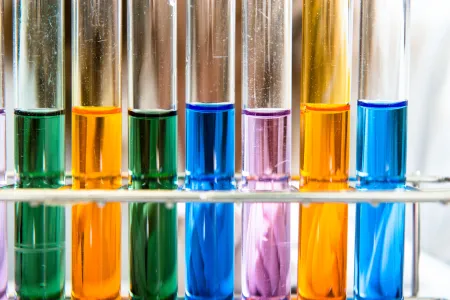Chemistry
New Insights Into the Hydrogen Bonding of Hydrogen Sulphide
Water and the bad smelling molecule hydrogen sulphide do not seem to have a lot in common at first sight. However, when investing a little energy, some differences disappear.
At first glance, the ice cube in your soft drink and the smell of grandma’s famous egg salad don’t seem to have much in common. From a chemical point of view, however, the underlying molecules water (H2O) and hydrogen sulphide (H2S) are not that unlike. The binding of the hydrogen of one water molecule to the oxygen of another water molecule has been studied in great detail. The question of whether the bigger sibling H2S behaves similarly is, however, less well understood. A new study by the Bochum Cluster of Excellence “Ruhr Explores Solvation” (RESOLV) fills this gap. The team from Physical Chemistry 2 at Ruhr University Bochum, Germany, has published their findings together with colleagues from Atlanta and Nijmegen in the journal “Nature Communications” on November 05, 2024.
The experimental research by the Bochum group of Professor Martina Havenith was complemented by theoretical studies of Professor Joel Bowman from Emory University in Atlanta and Professor Ad van der Avoird from Radboud University in Nijmegen.
H2S is considered to be one of the most primitive sulfur-bearing molecules in the interstellar medium, and an essential part of various biological processes in mammals. The chemical community has investigated it with several infrared studies, but some uncertainty about the behavior of H2S remained.
High-resolution IR spectroscopy in superfluid helium nanodroplets
The spectroscopic technique used to record the H2S molecules is quite unconventional. In order to perform the experiment, single molecules of H2S were embedded in superfluid helium droplets inside a vacuum chamber. By varying the amount of H2S gas in the vacuum chamber, the Bochum researchers Svenja Jäger, Philipp Meyer and Jai Khatri were able to statistically control the number of molecules being picked up by the helium droplets and optimize the conditions so that on average always two molecules are picked up at the same time.
The droplets are made of superfluid helium, which holds some unique properties compared to normal fluids. Some of those particular features are the very high heat conductivity, which keeps the droplets and their embedded molecules close to absolute 0 Kelvin, the transparency over the spectral range from UV to the far infrared, and the almost non-existent interaction of the fluid with the embedded molecules. Those three features are crucial for the performance of the experiment, as they allowed the scientists to investigate the interaction between two H2S molecules without any interference from other molecules or thermal energy. This resulted in high-resolution IR spectra, which did not just display the vibrational movements of the H2S dimer, but also its rotations and tunnelling splittings. Tunneling splitting describes the separation of energy levels due to a small energy barrier between two different structures of the same molecule.
Foundation for a better understanding of hydrogen bonding
Those experimental results were then complimented by theoretical calculations, which made it possible to characterize the energy splitting of the H2S molecules in the ground and excited states. In comparison with water, it was found that the binding between H2S molecules is more floppy in the ground state. Still, upon excitation of one of the molecules, the hydrogen bonding becomes very similar to the one in water.
Moreover, the researchers could further characterize and re-assign vibrational signals already published by other chemists and display a sensitive test for state-of-the-art computational methods . Those methods are used to predict the interactions of different molecules and to ensure that their predictions are correct; they have to be compared to experiments. The investigation of binding between small molecules such as water and, in this case, H2S, greatly enhances the understanding of fundamental chemistry and therefore allows for the development of even more precise theoretical calculations as well as also supporting the understanding of more complex chemical systems.
